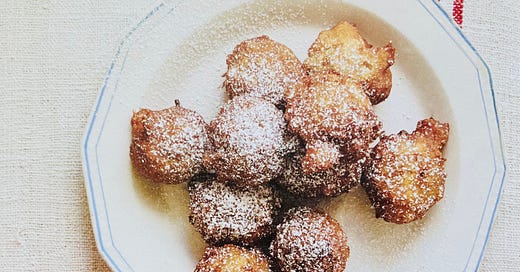Apple Cider Fritters Say Fall - No. 151
Plus, an easy cider doughnut recipe coming on Thursday
This week we’re celebrating apples, cider, frying, and fall. Today, I share a lovely fritter with apples and cider inside. On Thursday, for paid subscribers, I’ll share an easy yeasted doughnut to make this weekend. Not a subscriber? Here’s how to join us.




